MCPSA Research: Enrollment Trends in Missouri Charter Schools. A 2019 – 2025 Analysis
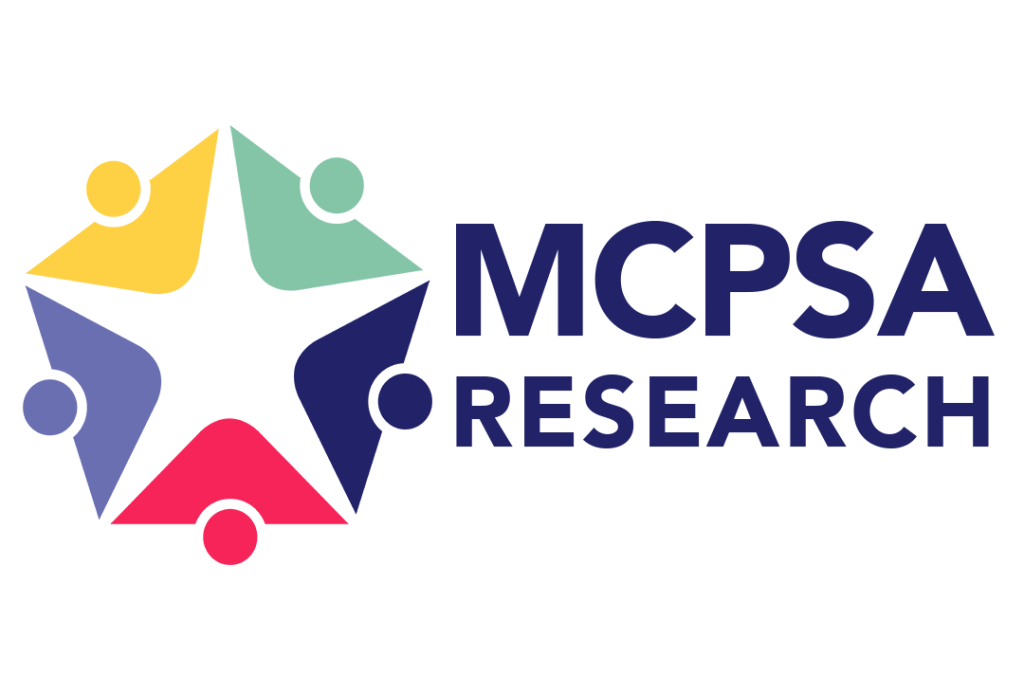
Enrollment Trends in Missouri Charter Schools: A 2019-2025 Analysis
Executive Summary
Missouri’s charter school sector has undergone a significant transformation from 2019 to 2025, marked by notable patterns of growth and innovation. Charter schools achieved growth of 3.1% (+750 students), while district schools experienced an 11.0% decline (-3,751 students). Most notably, charter schools demonstrated extraordinary growth in early education, with PreK-3rd grade enrollment increasing by 144.4% (+4,884 students). Individual school performances showcase remarkable successes, such as City Garden Montessori’s 116.3% growth, demonstrating the sector’s capacity for innovation and community response.
Overall Enrollment Landscape 2019-2025
The Missouri charter school sector’s evolution from 2019 to 2025 reflects broader changes in urban education. The total student population across both sectors has declined from 61,410 students in 2019 to 54,848 by 2025, indicating significant demographic shifts in both cities. Missouri’s charters showed an overall growth of 3.1%, adding 750 students to their total enrollment, while district schools in the same cities declined by 11.0% (-3,751 students). Charter schools have maintained steady growth while district schools have experienced sustained decreases. The percentage of students in each type of school now stands at 55.2% for district schools and 44.8% for charter schools. In 2019, charters represented 41% of the student population in both cities, representing a gradual but steady shift toward the charter sector. This demonstrates the increasing role of charter schools in urban education.
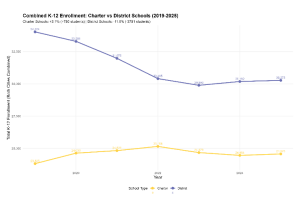
Geographic Analysis: Tale of Two Cities
St. Louis
St. Louis presents a positive contrast between charter and district enrollment trends. District schools have experienced a decline from approximately 20,000 students to 16,212 by 2025, while charter school enrollment grew from 11,363 to 11,631 students (+268 students, +2.4% increase). This means that in 2025, 41.8% of students in St. Louis are in a charter school. The St. Louis charter sector shows strength in specialized programs and innovative models, with several schools demonstrating exceptional growth and community engagement.
Kansas City
Kansas City charter schools serve 47.9% of students (12,944 students), while district schools enroll 52.1% (14,061 students). This balance reflects the longer history of charter schools in Kansas City. The city’s charter sector shows stable enrollment patterns overall, with many schools experiencing positive growth trajectories. Kansas City charter schools increased from 12,435 to 12,944 students (+509 students, +4.1% increase) over the past 6 years.
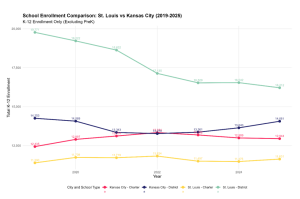
Early Education Transformation
The transformation in early education represents the most dramatic success in Missouri’s charter landscape. PreK enrollment growth has been particularly remarkable, with St. Louis charter schools achieving 125.3% growth (+287 students) while district schools declined by 14.5% (-301 students). Kansas City’s charter sector showed even more impressive PreK gains of 173.0% (+275 students), compared to district schools’ 3.3% growth (+36 students). This pattern extends across the full PreK-3rd grade span, where charter schools achieved extraordinary growth of 144.4% (+4,884 students) while district schools declined by 11.4% (-1,700 students).
Looking deeper at the PreK-3rd grade trends, St. Louis charter schools grew by 139.6% (+2,536 students) while their district counterparts declined by 17.5% (-1,557 students). Kansas City charter schools expanded by 150.0% (+2,348 students) against a district decline of 2.4% (-143 students). The most significant growth occurred between 2019 and 2022, suggesting a strategic focus on early education and increasing demand from families seeking quality educational options.
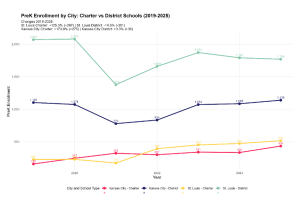
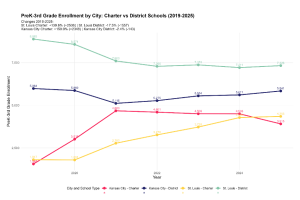
Individual School Success Stories
The charter sector’s most compelling success stories from 2019 to 2025 demonstrate the potential of innovative educational models. City Garden Montessori in St. Louis stands as the premier example, achieving 116.3% growth from 227 to 491 students over the six years. This growth occurred during a period of overall enrollment decline in the city, suggesting strong program differentiation and community demand. KIPP: Endeavor Academy in Kansas City demonstrated successful network expansion, growing 52.3% from 644 to 981 students, while Guadalupe Centers Schools achieved impressive growth of 27.8%, expanding from 1,203 to 1,537 students.
These success stories highlight the charter sector’s ability to respond to community needs and implement innovative educational approaches that attract and retain families.
Short-term Growth Patterns (2024-2025)
Recent year-over-year changes reveal ongoing sector dynamism and growth potential. Newer and smaller schools show remarkable expansion, with Atlas Public Schools achieving a 36.7% increase and St. Louis Voices Academy growing by an impressive 94.1%. These short-term growth patterns highlight the charter sector’s responsiveness to community needs and its capacity for rapid positive change when programs meet family expectations.
Future Implications and Sector Development
The analysis reveals significant opportunities for future sector development. Strategic growth management can leverage the charter sector’s demonstrated capacity for expansion while building on successful models. The sector’s strength lies in developing robust support systems for growing schools while maintaining the innovative edge that drives charter success. The remarkable achievement in early education suggests continued focus on sustainable expansion in this area while building effective pathways through K-12.
Innovation and adaptation remain crucial for continued success. Charter schools have demonstrated their ability to understand local dynamics and strengthen community connections while responding to demographic shifts. The positive experiences across St. Louis and Kansas City highlight the importance of flexible approaches that can be tailored to specific community needs while maintaining high educational standards.
The Missouri charter sector’s trajectory from 2019 to 2025 demonstrates remarkable potential and achievements. Success in moving forward requires continued attention to growth management, innovation, and market responsiveness while building institutional resilience. The focus must remain on building sustainable institutions that can maintain their growth trajectory while continuing to serve their communities effectively through innovation and adaptation.
By Jose De Jesus Sotelo
About the Author: Sotelo is currently a fellow at Harvard’s Strategic Data Project in the School of Educational Policy. In this role, he works with the non-profit Missouri Charter Public School Association to make the use of data equitable and transparent for all stakeholders in the charter sector in Missouri. He is also a graduate of the Cognitive Psychology Program at Northwestern where he specialized in data science and statistics. In his work at Northwestern, he focused on the impact of infusing high school curricula with GIS technologies and their role in spatial problem-solving. Additionally, Jose was a fellow at ETS where he focused on equitable practices of graduate admissions and how noncognitive skills impacted decisionmaking.
Related Posts
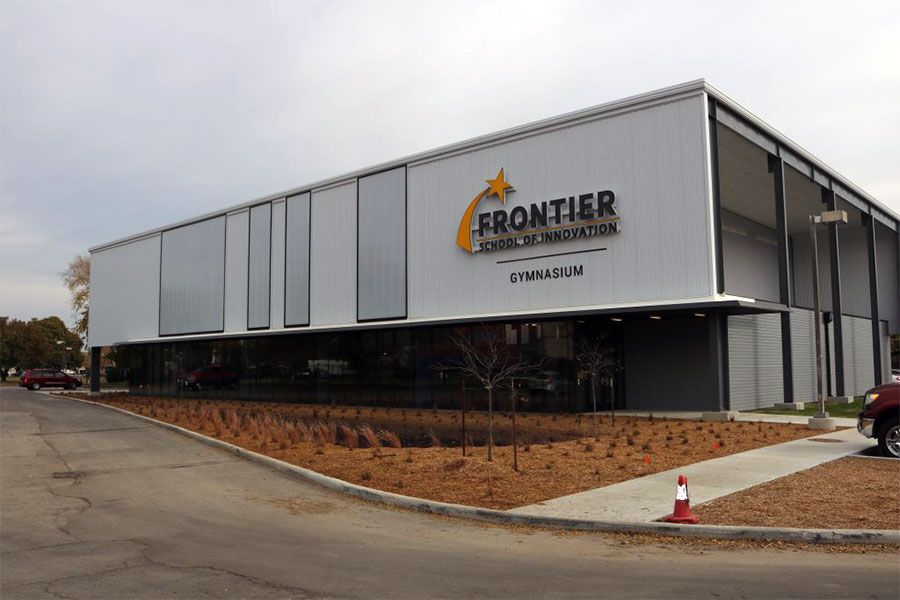
Frontier Schools Expands in Missouri, Increasing Access to High-Quality Education
COLUMBIA – Frontier Schools has applied to open a charter public school in Columbia, Missouri, beginning in either the 2026–27 or 2027–28 school year, working alongside the community to meet […]
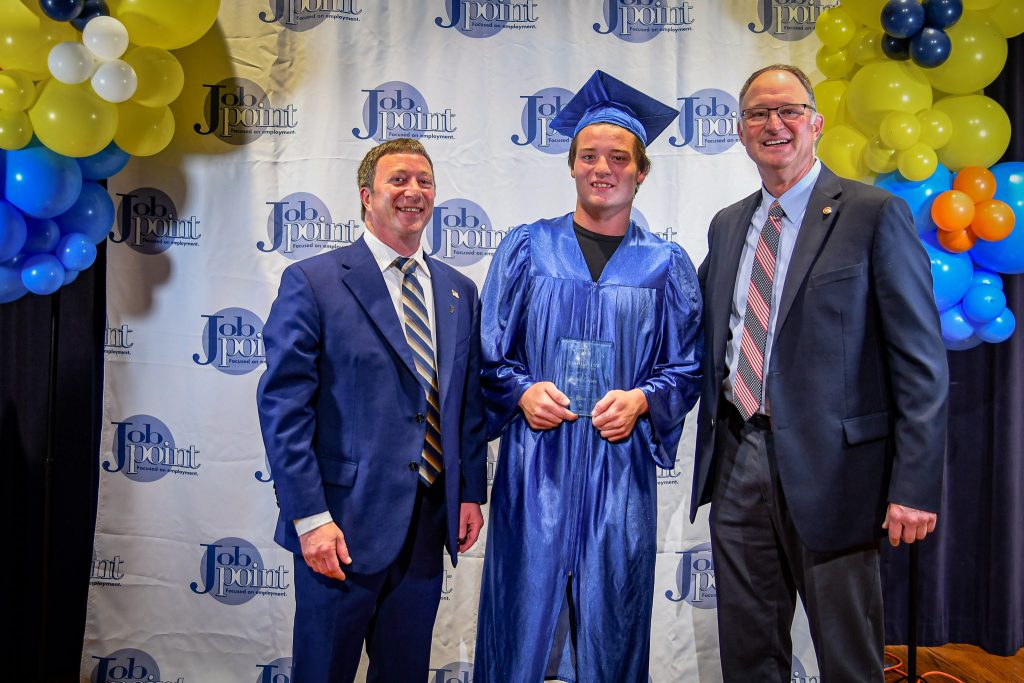
Job Point Proposes Columbia’s First Charter School, Focused on Workforce Readiness
COLUMBIA – Job Point has submitted its Letter of Intent and Prospectus to establish a workforce-based public charter school in Columbia, Missouri—becoming the first to pursue being a public charter […]
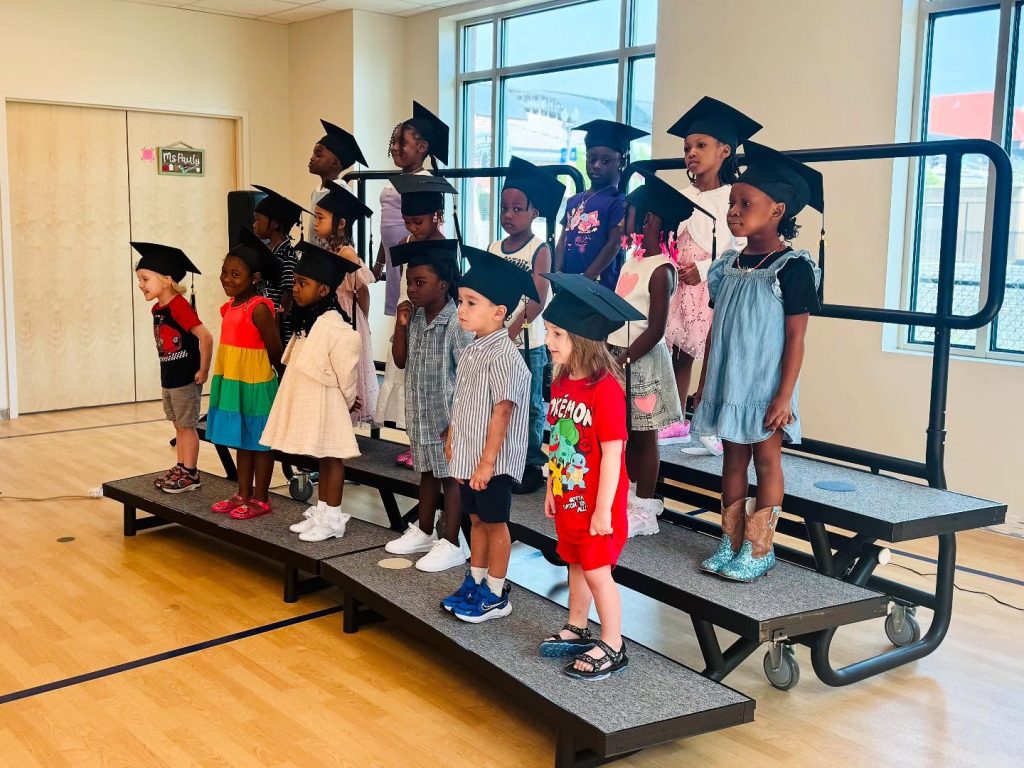
How 25 years of charter schools have helped Missouri students and families
By Noah Devine | This Op-ed appeared in the Kansas City Star and the Columbia Missourian In 1999, Académie Lafayette opened its doors, becoming Missouri’s first public charter school. The […]